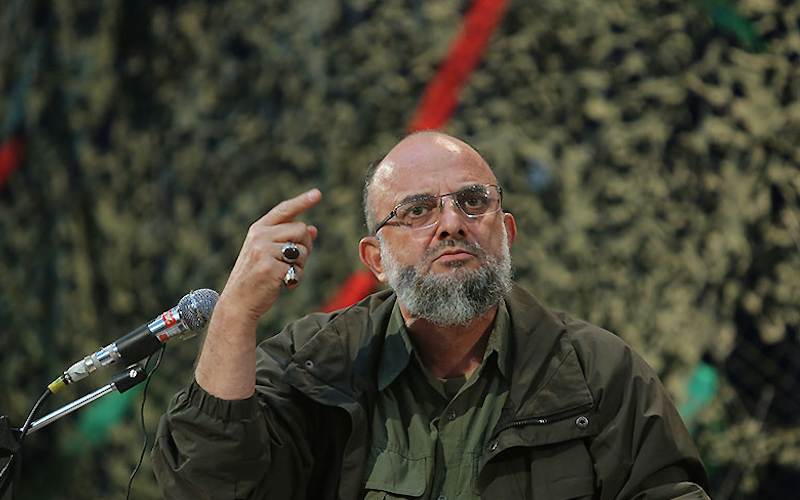
Pan-Iranism: New Tactics of Conservatives in Iran
After the 1979 revolution, as soon as the Islamists came to power, they targeted nationalists as well as Marxists. At the time, Islamists considered nationalism a western ideology which had been imported to Iran as a symbol of “apostasy” and anti-Islamic values. Hence, activities of nationalist parties, especially the National Front which was comprised of Iranian nationalist academics and associates of Mohammad Mosaddegh, former Iranian prime minister, were curtailed and the Front was considered to be anti-Islam and its activities were banned.
Today, more than three decades later, Islamists have attained power in the Middle East but without successful results. The Muslim Brotherhood in Egypt was overthrown in a military coup. The Ennahda party In Tunisia was forced to step down to be followed by the secularist party, Nidaa Tounes. In Turkey, the AKP government failed to offer a decent example of conflation of Islam, democracy and secularism due to its sectarian foreign policy and support for Sunni (jihadist) groups and in the domestic arena by creating an authoritarian atmosphere.
It appears that Iranian elites especially military institutions including the Iranian Revolutionary Guard Corps (IRGC) have come to realize that in order to attract young people and gain popularity in the public sphere, new ideologies should be introduced. The “pan-Iranist” and “nationalist” slogans seem to be a perfect tool for this purpose.
In addition to highlighting the role of Qasem Soleimani, Quds Force commander’s recent statements reinforce the speculation about the using of nationalistic slogans.
The latest example are remarks by Saeed Ghasemi. In the conference “Two Centuries of Anti-Colonialism resistance” in Bushehr, he said that “Bahrain is an Iranian province and should join the Islamic Republic” and that “the land of this country belongs to Bushehr but was separated from Iran with sabotage in the past.”
He was a commander during the Iran-Iraq war and repeatedly supported Mahmoud Ahmadinejad. He introduces himself as Hezbollah and emphasizes Islamic and revolutionary values. He is one of the main opponents of the nuclear deal between Iran and the 5+1 and considers it a symbol of surrender and a retreat from principle. Ghasemi is also a supporter of President Daniel Ortega in Nicaragua and leftist leaders in Latin America and believes that Iran, along with Latin American countries should try to gain “independence” in the struggle against American “imperialism.”
His recent nationalistic remarks about Bahrain are similar to the position the “pan-Iranist” Party adopted decades ago. The emphasis of Pan-Iranists is on the necessity for the reunification of regions of Iran that were separated in the past. They even have put a black bar on the flag as a sign of grief for separation and dispersal of ethnic Iranian groups who once lived together for thousands of years in the form of “Great Iran” during the imperial era. In 1970 Mohammad Reza Shah Pahlavi agreed with Britain’s decision to allow public deliberation in Bahrain, while the Pan-Iranist Party disagreed. Mohsen Pezeshkpour, leader of the Party at the time, offered a plan for the impeachment of the government. But despite Pan-Iranists opposition, separation of Bahrain from Iran passed with 187 votes in favor and 4 votes against in 1970. The Shah then cut off his donations to the Pan Iranist Party. After the revolution Pan-Iranist leaders held meetings with Iranian officials but were marginalized.
The revolutionary and Islamist figures share some views with the Pan-Iranists. Pan-Iranists began their opposition following the Second World War with the entrance of allied forces into Iran. They were influenced by Nazism ideas and introduced themselves as a force opposed to the presence of foreign forces, particularly British and Russian. They used the slogan Death to the Imperialism of Russia, Britain and America. Revolutionary Islamists in Iran have similarly warned about the alien enemy and its influence. On the other hand, the Pan-Iranists were antagonistic towards Jews. In this respect, the religious right wing share common views. An example of this is denying the Holocaust and holding a conference against that historical event. Pan-Iranists also considered Communists as their main enemy and used the slogan “Death to Tudeh Party, dissident of Islam.”
From this perspective Islamists and nationalists share common views and are opposed to Socialists and Communists. However, Islamists and Pan-Iranists do part ways. Pan-Iranists emphasize the territory and superiority of the Iranian race while Iranian revolutionaries believe in a revolutionary Islam and prefer Islam over nationalistic issues. Despite these differences tension between Iran and Saudi Arabia are a result of regional crises especially in Syria and Yemen. Revolutionary figures and institutions conclude that emphasis on nationalistic issues and Iranian identity can mobilize public opinion and increase popularity with young people and have put the issue on the agenda.
Trying to combine nationalism with Islam was tested in Turkey by the military. In the ‘70s, the Turkish military was faced with growing conflicts between the right and left parties. They devised a combined Islamic-Turkish model to suppress the communist and leftist ideology and to create a sense of national unity. In this model there was an emphasis on three institutions “family, mosques and army.” This helped create a conservative spirit and maintained order and the status quo. But the result led to the strengthening of Islamists in the political arena.
Once Pan-Iranism was a response to Pan-Arabism under the leadership of Gamal Abdel Nasser, Egypt’s former president. The Pan-Iranists shouted that the Persian Gulf would become a graveyard for Abdel Nasser. But today the slogans of Pan-Iranists have become a tool in the hands of conservatives to deal with Arab influence. Time and future developments will clarify whether the conflict between Islamism and Nationalism in the long-term will become a crisis and reverse the outcome of the plan.
